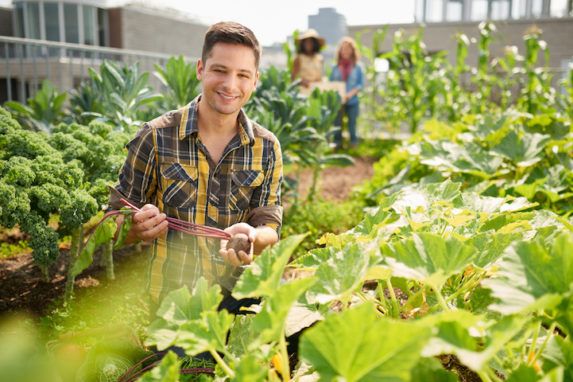
The work of young people revolves around agriculture
Rekindling agriculture to provide job opportunities for young people. Perhaps through specific training to be carried out in Valdicecina.
This is the spirit that led the Niccolini Institute to organize the Volterra Next conference, Agriculture for the Future, at the Santa Maria a Maddalena Study Center. A double appointment: yesterday on the dairy sector and on May 24th on the wine sector. But yesterday morning’s event highlighted the many stories of entrepreneurs linked to milk production and cheese processing in front of an audience of industry operators, but above all of students. Because the initiative is aimed at young people who combine tradition and innovation.
“The goal is to provide employment opportunities for young people,” said principal Ester Balducci, “but also to lay the foundations for stopping the depopulation of Valdicecina, which between 2003 and 2010 saw 500 people leave this area, but in the following seven years, 1,500 people left. We believe that a reversal of the trend can come from synergy between schools, institutions, and companies with a plan that can enhance agriculture and tourism, culture, and gastronomy.”
Also present was the mayor of Volterra, Marco Buselli, who gave his opinion on depopulation: “It is not true that people leave because there are no jobs, but because of a lack of trust in a possible model. Our role is to create the conditions for a model of development that enhances typical products and not tourism in the style of San Gimignano.”
Valuing typical products and integrating them into a system is the thesis proposed by Pomarance councilor Loriano Fidanzi: “Operators make enormous efforts to carry out their work, but they need a support network from institutions.”
Volterra Next is also a logo with the Anello di San Martino by Mauro Staccioli and in the center the Ombra della Sera. “Two symbols of our territory,” said Professor Francesco Stefanelli, “which, if you look closely, also depict the power button of electronic devices. It is precisely the start of a new course that we want to put into practice in the coming years.”
And what better way for such an ambitious project than to listen to success stories in the dairy sector? At the microphone, therefore, Bartolomeo Carta, president of the Consortium for the Protection of Pecorino delle Balze Volterrane DOP, spoke.
“We are eighteen in the consortium,” explained the farmer, “all aware that it is only through the maintenance of traditions that we can obtain a product capable of carving out important market spaces. Obtaining protected designation of origin is just the beginning. The ideal would be to have an agricultural school in our area, so that we can obtain even better products.”
The organizers also wanted to bring the example of the Maremma milk producers’ consortium, represented by communication manager Marco Berni. “Only by joining forces can we create the foundations for growth and competitiveness. We have 150 employees, we serve much of central Italy,” said Berni. “And many of the results we are achieving come from tourism, which has allowed our milk to be known to people who then, once back home, have sought it out and continued to buy it. The consortium was created to avoid selling off products, and those who created it decided to maintain control over production, processing, and sales. This has led to a reality that is able to withstand the crisis.”
On the other hand, Busti di Acciaiolo has a double-digit growth in turnover. “And since we moved to the new production site, we have doubled it,” emphasized Stefano Busti. “The challenge is to safeguard traditions, innovate, and try to sensitize people to a conscious consumption of quality products.”
Giovanni Cannas of Fattoria Lischeto di Volterra agrees: “Everything comes from quality, but also from distribution. Pecorino delle Balze Volterrane is sold worldwide, but it should be present in all shops in Valdicecina. And it is necessary for the breeders in the area to join the consortium.”
Positive examples also come from Giuseppe Carai of the Fratelli Carai dairy and Mario Tanda of the Paterno estate in Monterotondo. But the real revelations came from Gian Carlo Tenore, professor of food chemistry at the Federico II University of Naples.
“We study the properties of foods and their ability to treat certain diseases. Like buffalo mozzarella, whose molecules are used for the regeneration of intestinal mucosa in case of tumor pathologies. Or the nurca apple, which is able to lower cholesterol. And the consortia for these two products, thanks to these researches that lead to specific certifications, have significantly increased production.

